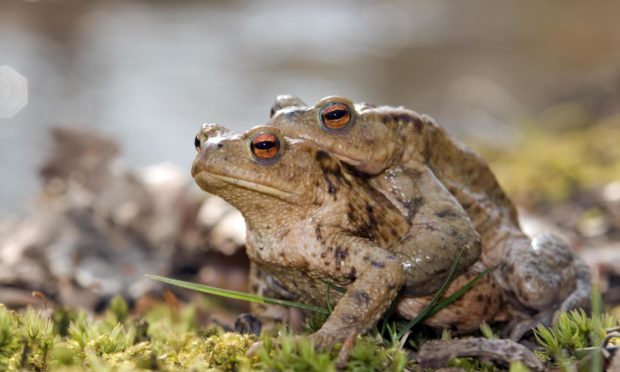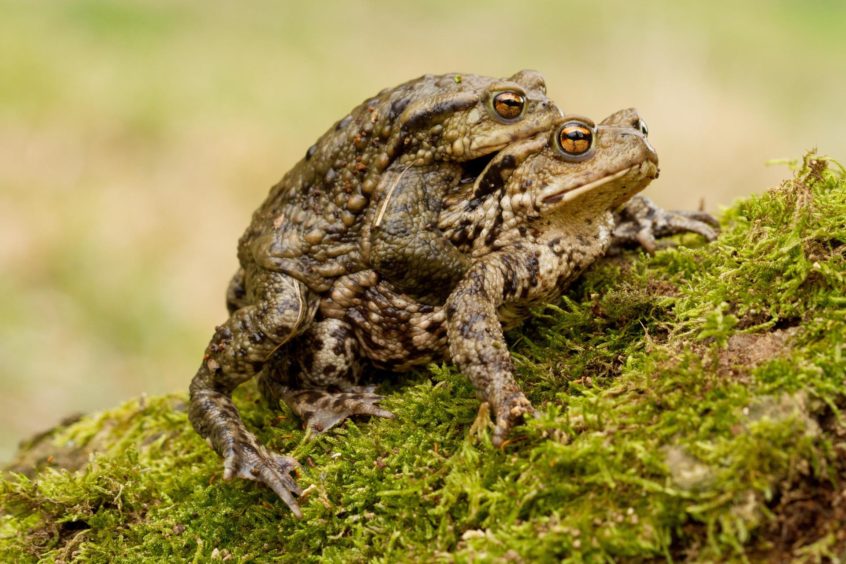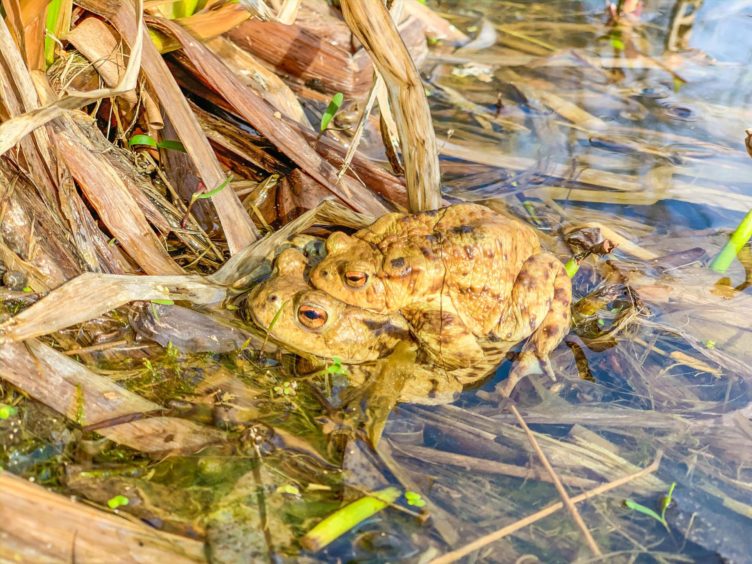I plunged into the icy cold backwash pool of my local river on a rain-scattered dawn and slowly snorkelled to the far bank where the frenzy of spawning toads lay.
I had glimpsed these warty amphibians the previous day when walking the bankside and had been eagerly anticipating their appearance. I had first discovered this breeding colony last spring, and ever since, I had hankered to snorkel in among them, and now was my golden opportunity.
The shallow bottom of the pool was thick with silt, but as I glided across the water, the first toads appeared. Initially, a lone individual resting on the bottom, then another, followed quickly by a pair in their mating position known as ‘amplexus’ (the Latin for ‘embrace’). Here, the male had a tenacious, vice-like grip on the back of the female in readiness to fertilise her string of eggs when released into the water.
Toads go about mating with a zeal and passion that borders on the unhealthy, and as I swam up to the pool margin, a breeding ball of toads lay beneath me. There were perhaps four or five toads in this squirming mass, but it was hard to be sure because they were so entangled in their mating mayhem.
It was a mystery to me where these toads managed to pull their energy from, especially since they were thin and emaciated after having just emerged from hibernation. Such is the incredible intensity of the breeding occasion that for many toads this will be their final act and they will perish from exhaustion.
Indeed, the previous spring towards the end of the spawning period, I had come across such a mortal result among an entwined threesome of toads, with one of the animals having succumbed from the tight death grips delivered by the others. In a nearby muddy inlet, the bodies of two other toads lay prostrate on the bottom.
The most remarkable aspect of this toad behaviour was that they were spawning in the river, which is something I have never seen before, as typically they breed in large ponds and lochans. Although this backwash pool is mostly calm and placid like a pond, it is connected directly to the open river by a channel several feet wide and is exposed, at times, to the vagaries of the river’s powerful flow.
The toads had probably successfully spawned here for many years, as they are traditionalists in their breeding sites, but I wondered how the tadpoles would cope whenever the river turns to spate.
At least some must survive such cataclysmic events, perhaps by burrowing into the sediment for protection from the surging current. Compared to the calm of an enclosed pond, the tadpoles would also have to contend with predation by trout, kingfishers, and dippers. These river toads were a natural enigma and snorkelling in among them had unveiled an exciting new dimension to these intriguing creatures.
- Info
Toad spawn is laid in strings, unlike frog spawn, which is a jellified clump. Toads spawn slightly later than frogs, and once the tadpoles have developed into toadlets, they will leave the water in July and August.












